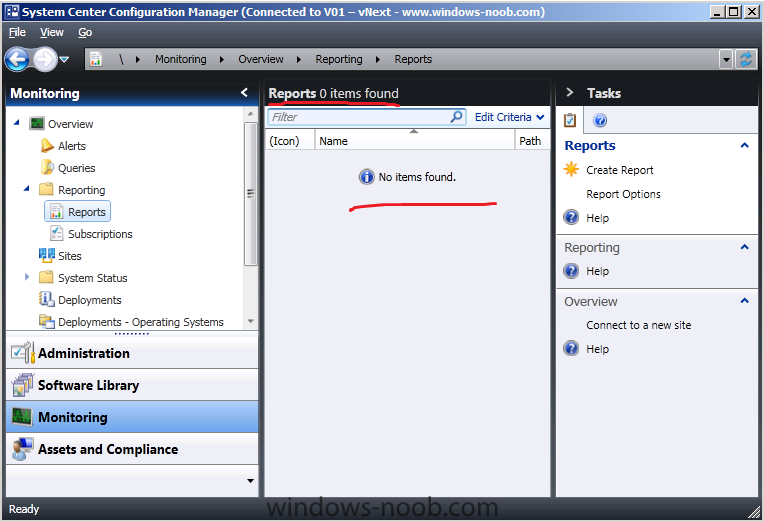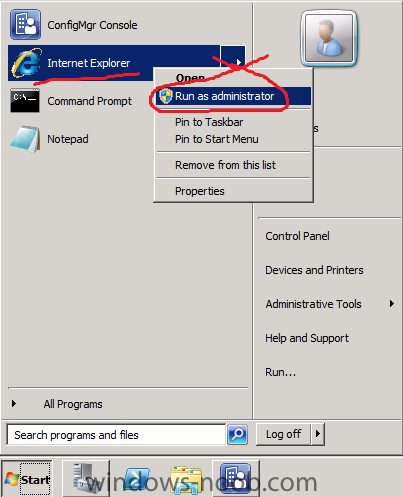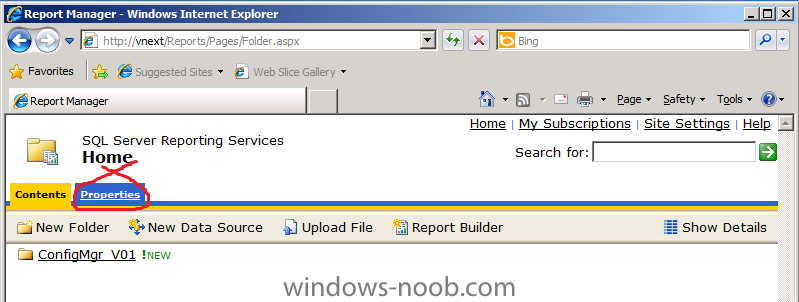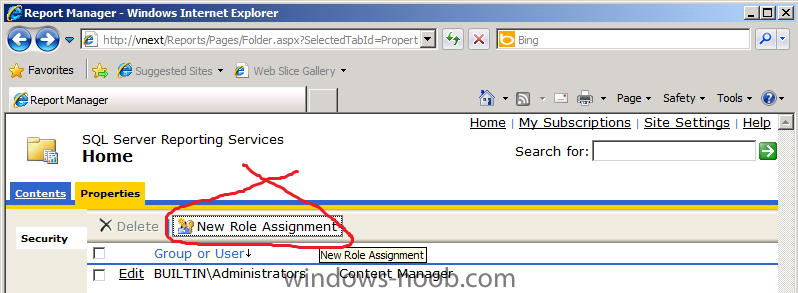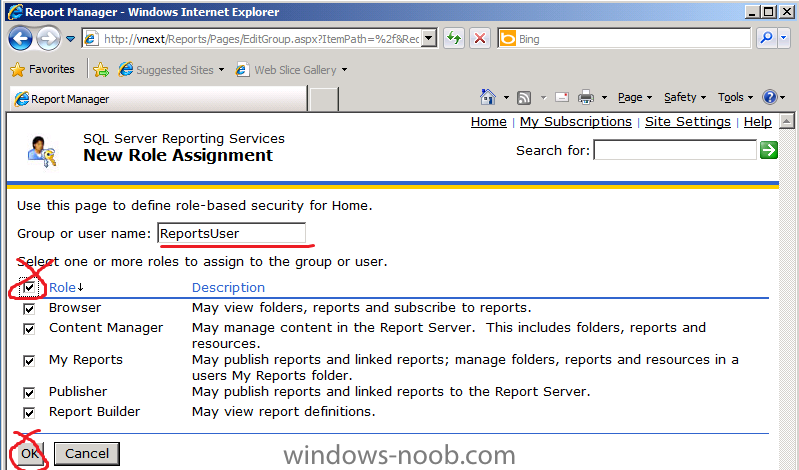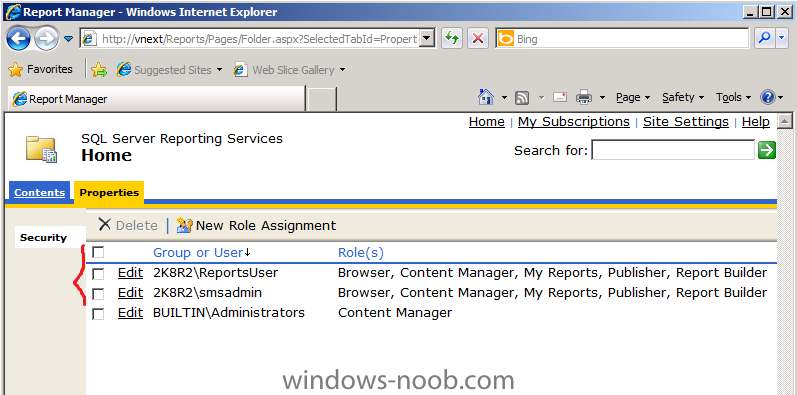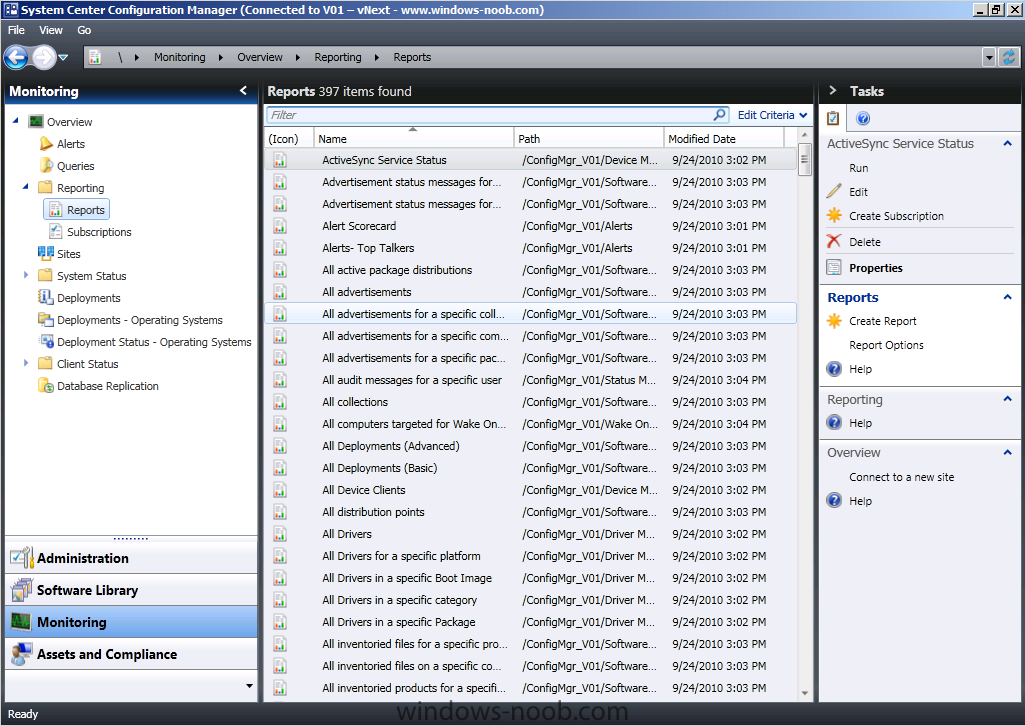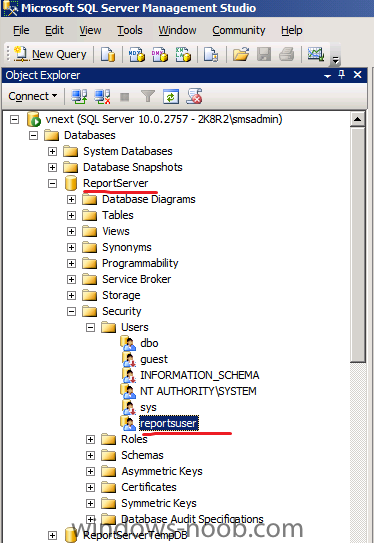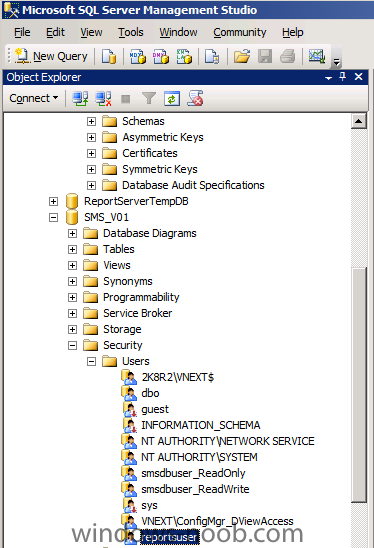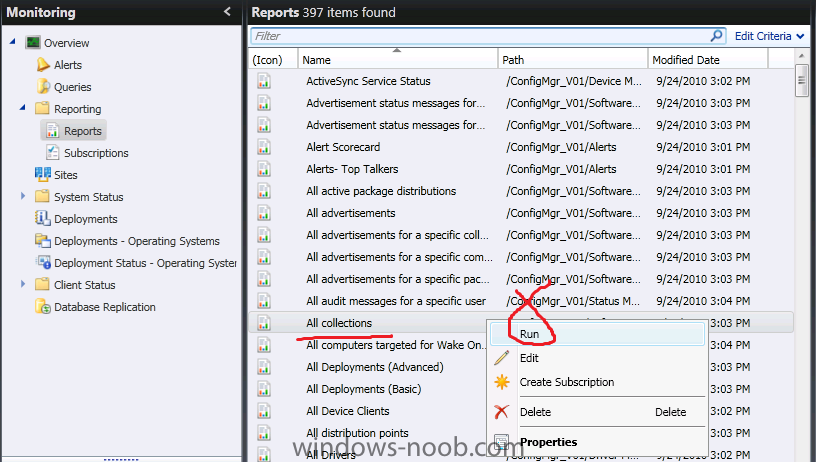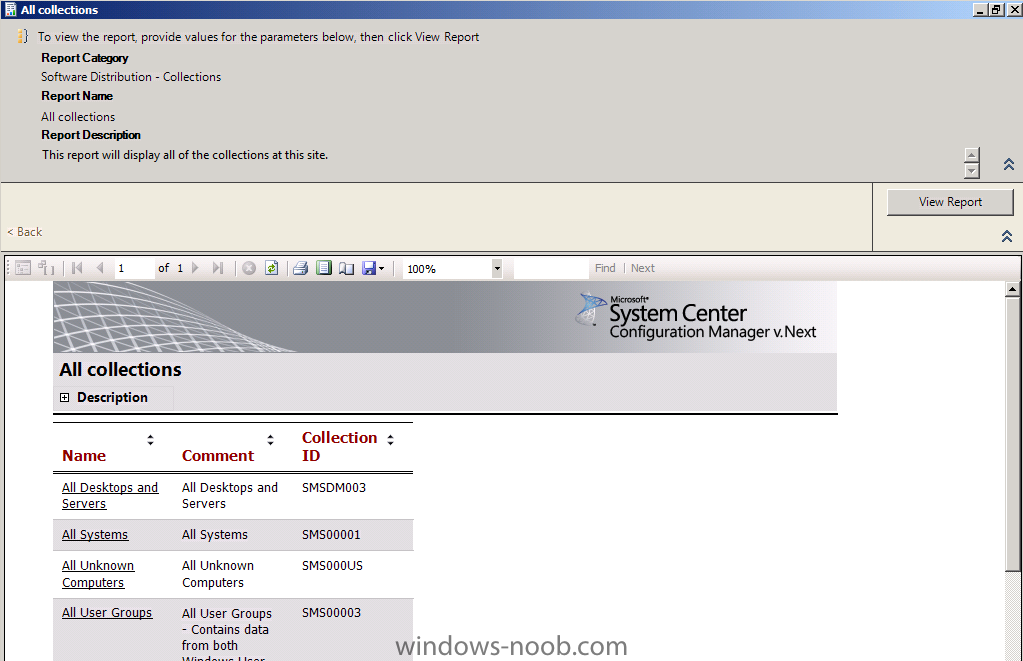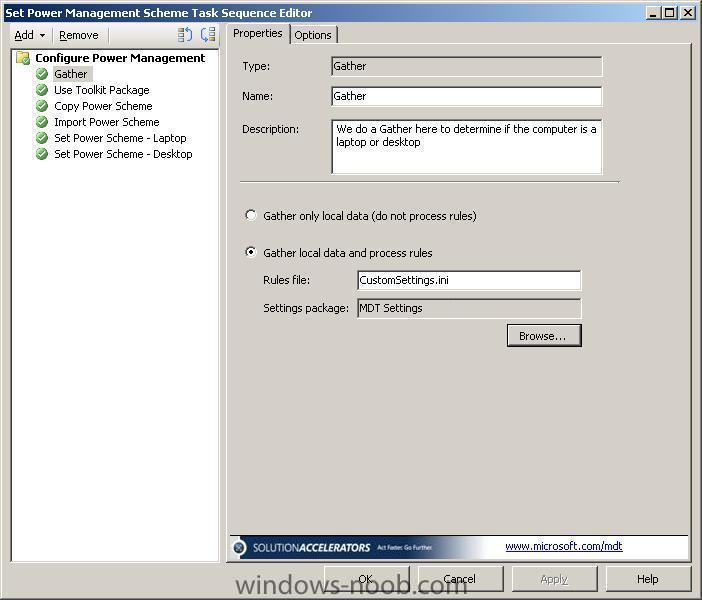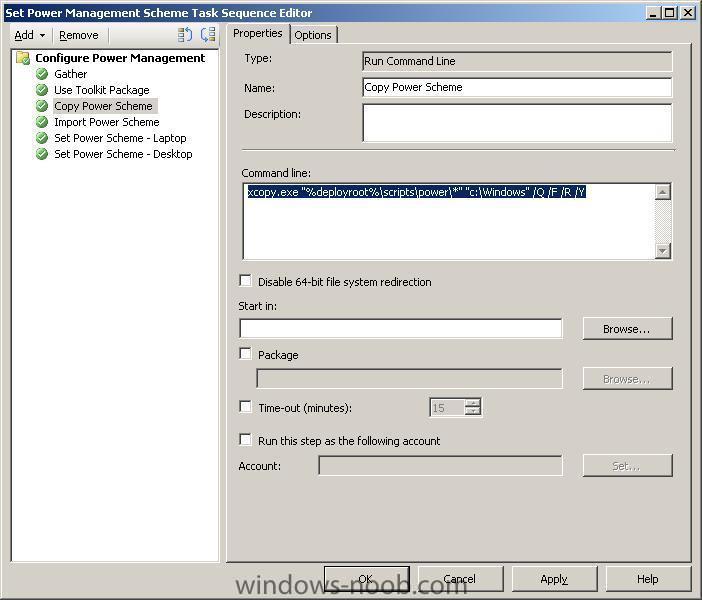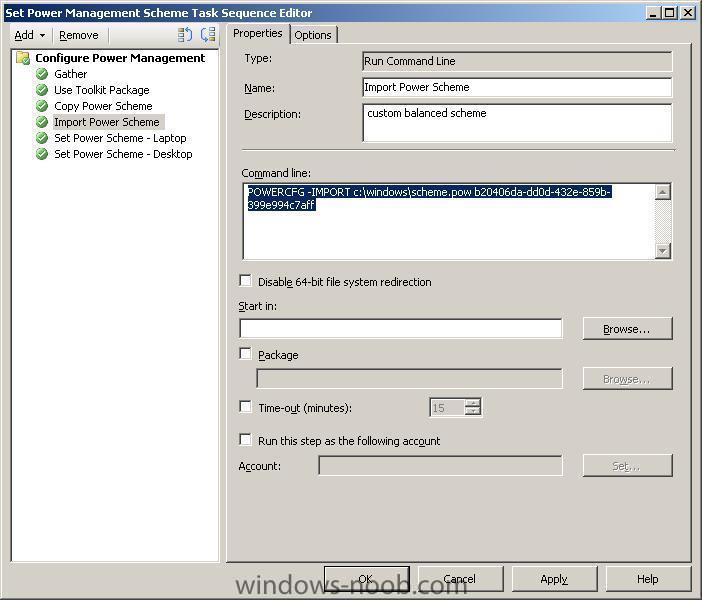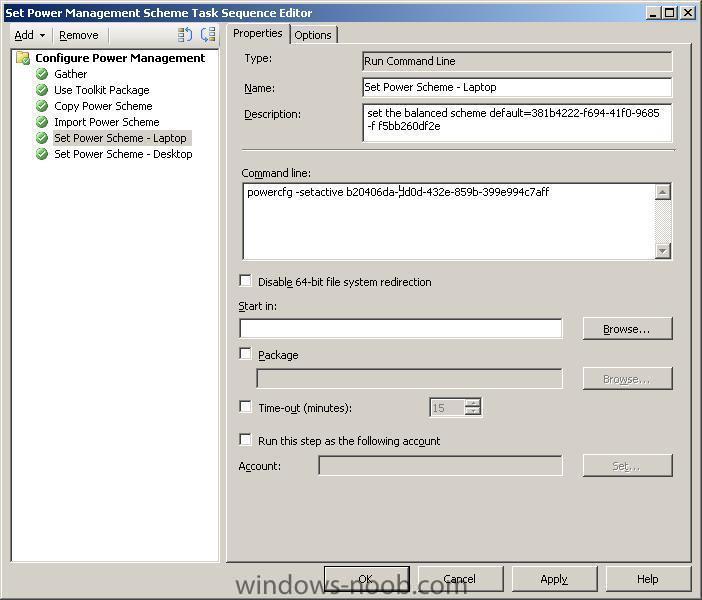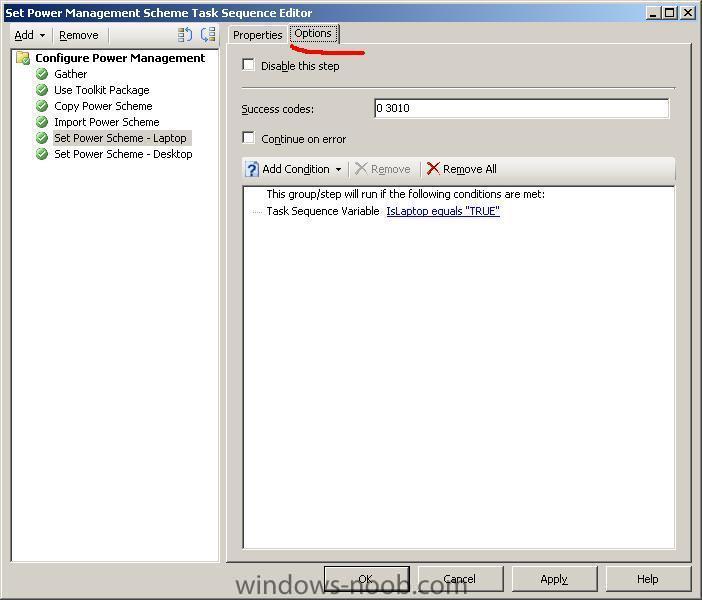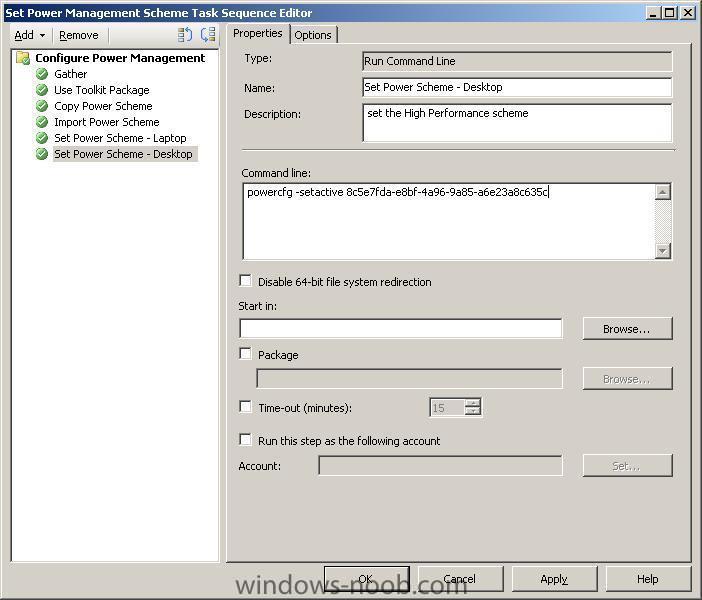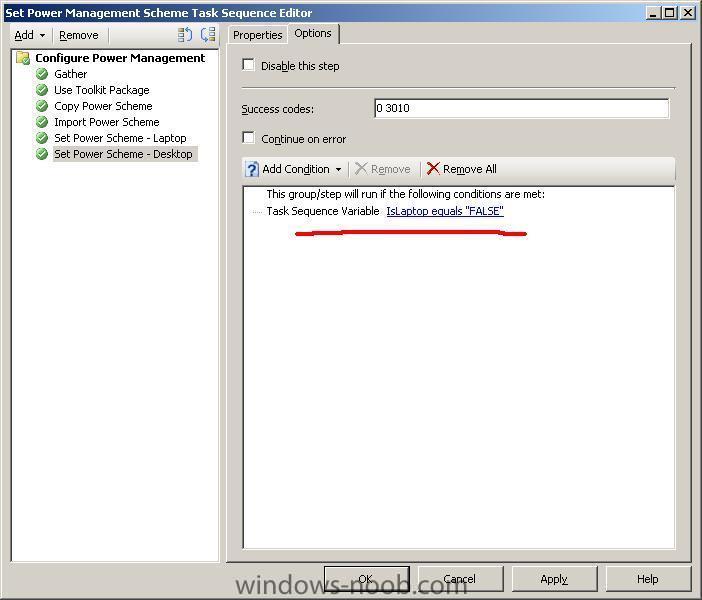-
Posts
9242 -
Joined
-
Last visited
-
Days Won
368
Everything posted by anyweb
-
are you deploying win7 using SCCM ?? did you configure the timezone value in your task sequence ?
-
i think the built in help explains it quite well: so based on the above, did you browse for any folder on the dp package or locally ? and if local, did it exist on the target computer ?
-

SCCM Console Lockout - urgently needed
anyweb replied to Jeff K's question in Troubleshooting, Tools, Hints and Tips
yikes that sucks.... and yes it's sounds like you need a db restored unless someone else has some bright ideas (back it the current one first), i haven't come across that specific problem before so please research further before taking that drastic action -

using vNext in a LAB - Part 3. Additional Configuration
anyweb replied to anyweb's topic in Configuration Manager 2012
Step 2. Configure SQL Server Reporting Services User permissions Now that we've installed the new Roles we need to configure security settings in SQL Server Reporting Services User permissions in order to see the reports in vNext otherwise we will be presented with No Items Found. Click on the start menu and right click on Internet Explorer, choose Run As Administrator, answer Yes to the UAC prompt. when Internet Explorer loads, browse to http://vnext/reports and when the Reports Manager window appears click on the Properties link Click on New Role Assignment to add some users Enter ReportsUser in the Group or UserName field and select All Roles and click OK repeat the above for the SMSadmin user go back into the vNext Console, and refresh the Reports node, you should now see all the reports available. don't forget to add the ReportsUser to your security login for the ReportServer and SMS_V01 databases and Once done, verify the reports work by running a report, such as All Collections, right click on the Report, choose Run the report should look similar to this, if you don't see the report verify you added ReportsUser to the database login/security in SQL. -

Deploy apps based on add/remove progs after OSD
anyweb replied to thadkew's question in Deploy software, applications and drivers
yes it's possible and here's one way of doing it(there are more, just up to you to get creative with how to accomplish it, but you could use registry settings and active directory checks to accomplish it) -
yes no problem, just direct the drivers to the right hardware manufacturer via wmi queries like so
-

How can I create a boot image with HTA support using MDT
anyweb replied to anyweb's question in Frontends, HTA's and Web Services
i didn't do that part yet, due to lack of time, but i'll try and re-focus... -
sccm can do it sure, just integrate mdt into configmgr and utilise mdt's features from within SCCM, you can create a frontend HTA which can ask this and set corresponding variables, these variables will be checked for in your dynamic task sequence which will or will not install software depending on those variables. and yes you can reimage a computer that is already in sccm by advertising the task sequence to whatever collection you wish (be careful in testing this !) for example All Systems or another collection where you know the computers are in eg: All Windows XP systems however you must get clever with it and change the task sequence properties such that it will only run on an OS that is NOT PRESENT in your organisation, that way it will never appear in RAP but will be available via cd/dvd/usb or PXE boot. I explain this concept here > http://www.windows-noob.com/forums/index.php?/topic/2336-password-protect-a-task-sequence/
-
MDT is not needed but is a nice add-on in terms of additional functionality within your task sequences for OSD in SCCM, the WAIK is builtin to SCCM 2007 SP2 and it contains tools such as Microsoft Windows SIM for editing unattend.xml files etc, but not needed for general OSD usage, the sccm guides here on windows-noob will show you when and how to use the features good luck, and welcome ! cheers niall
-

how can I configure SCCM 2007 in Windows Server 2008 - Part 3
anyweb replied to anyweb's topic in Configuration Manager 2007
have you checked your firewall settings ? and your boundaries ? -
Free E-book Learn about the features of Windows Server 2008 R2 in the areas of virtualization, management, the web application platform, scalability and reliability, and interoperability with Windows 7. Sign in to download Introducing Windows Server 2008 R2, written by industry experts Charlie Russel and Craig Zacker along with the Windows Server team at Microsoft. Sign in to download this free e-book offer
-

how to get rid of abortpxe.com
anyweb replied to anyweb's question in Troubleshooting, Tools, Hints and Tips
thanks for the kind words the wds service has a cache which tends to 'store' things related to pxe boots, this can be set via the registry, so restarting the WDS service is a test to see if it's worth setting this value, so please test it -

Error: PXE-E55: ProxyDHCP service did not reply to request on port 4011.�
anyweb replied to johna8's question in Deploy Server 2008 R2
it wouldn't hurt to try, what values have you configured so far ? have you configured any dhcp server options ? -

problems deploying Firefox
anyweb replied to EMFschool's question in Deploy software, applications and drivers
do you mean your Network Access Account as provided in the computer client agent ? or ? -

how to get rid of abortpxe.com
anyweb replied to anyweb's question in Troubleshooting, Tools, Hints and Tips
in that scenario if you immediatly restart the wds service and try again does it work ? what security issues are you facing for unknown computer support ? -

Task Sequence hangs at Downloading 8 of 21 Updates
anyweb replied to SRR's question in Software Update Point
well what does your windowsupdate.log say ? -
now that we know how to change PowerScheme's we can apply the same logic in a Task Sequence, we use an MDT integrated task sequence to avail of some scripts within MDT. Our first step is to use MDT's Gather function (MDT Settings) to determine if the computer is a laptop or desktop our second step use's the MDT Toolkit Package (MDT Files) as we have copied the powermanagement POW file(s) to a subfolder of the scripts directory called Power Our next step copies the files to our target folder (c:\windows) using this command line xcopy.exe "%deployroot%\scripts\power\*" "c:\Windows" /Q /F /R /Y Now we Import the power scheme using the powercfg -IMPORT command and now we actually apply the power scheme based on whether the client machine is a laptop or desktop, first step is for a laptop and the query to check if it's a laptop is done on the options tab, the step will only run if the variable IsLaptop is True and finally we have the Desktop Step and it's options are as follows that's it, add the group above to a standard Windows 7 Deploy task sequence after the apply operating system step, deploy some Windows 7 laptops and desktops and note the newly changed Power Schemes !
-

Task Sequence hangs at Downloading 8 of 21 Updates
anyweb replied to SRR's question in Software Update Point
none needed, why are you asking ? -

problems deploying Firefox
anyweb replied to EMFschool's question in Deploy software, applications and drivers
yes i meant there, so it's listed as Installed in package status, then that is good, now you'll need to verify on the client if FireFox is installed or not, is it ? if not, start looking at the logs in ccm\logs to find out what went wrong -
well enable verbose logging on Capture User State and Restore, then look at scanstate.log and loadstate.log see where the failure is
-

Task Sequence hangs at Downloading 8 of 21 Updates
anyweb replied to SRR's question in Software Update Point
well if you could try using a group policy apply step before this to rule out the proxy, it would be a great test you can create the local group policy on a windows 7 client (gpedit.msc) with the proxy change (User Cofiguration, Windows Settings, Internet Explorer Maintenance, Connection, Proxy) once the change is made, apply the group policy (gpupdate /force) then you can copy the files stored on that client computer (C:\Windows\System32\GroupPolicy) to your SCCM Server as a package, then create a Step in the TS to copy the files in the package to the target computer as a step in the Task Sequence, something like this xcopy.exe "\GroupPolicy" "c:\windows\system32" /E /C /I /Q /H /R /Y /S then Have a step before Install Software Updates called Resetart Computer which restarts the pc (and that means the Local GPO get's applied with the proxy settings) -

problems deploying Firefox
anyweb replied to EMFschool's question in Deploy software, applications and drivers
a few things to try 1. temporarily disable the firewall on client on server to verify it's not the firewall getting in the way 2. verify the application is distributed to the distribution points by checking it's package status, it should say 'installed' -

Task Sequence hangs at Downloading 8 of 21 Updates
anyweb replied to SRR's question in Software Update Point
well from the log how long was it waiting, was it like 18 hours ? i know we had issues here with proxy settings causing it to repeat 'waiting for ....' basically because it couldnt talk to the proxy server to get the updates -

Task Sequence hangs at Downloading 8 of 21 Updates
anyweb replied to SRR's question in Software Update Point
then that's most likely cuasing your issue, if you can apply a local gpo to set the proxy prior to the software updates task then you should be ok



